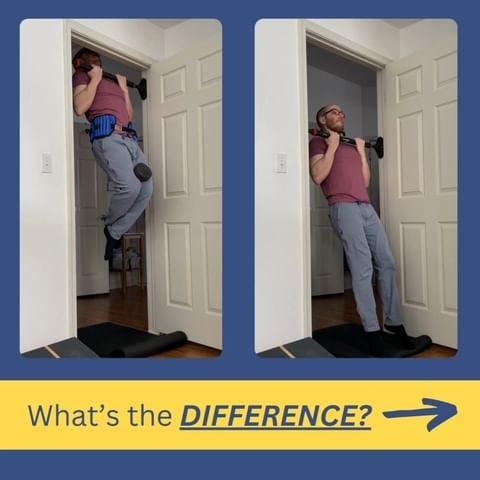What is the difference between an exercise variation and a progression?
Is this helpful or is this another semantics debate with yourself, Tyler?
Reposting this article from a few years ago because my friend and colleague Jeremy Fein wrote a great post recently on why someone might choose a different variation of a movement.
Check out his post here:
Now back to our regularly scheduled programming:
Progressions vs. Variations
It is very common in fitness and movement-related modalities to refer to different versions of movements and exercise as progressions and regressions.
I find this problematic because it suggests there is a “right” way to do a movement and everything else is a lesser version. In reality, different variations stress or prioritize different tissues and mechanics through displacement of the center of mass (CoM) and various load placements. Some may be more or less efficient for individuals respective to their goals, morphology (body shape), and familiarity with the pattern or position.
For this reason I prefer the descriptor of variations, as it highlights that these are merely different tools that have various applications and benefits, and work best when paired with the individual needs of the lifter/mover/exerciser.
However, there are situations when describing an exercise as a progression is appropriate, and that is when we are working toward a specific goal movement: in those cases, we have a distinct position or pattern which we can not yet perform, but are working toward.
This is most common in bodyweight maneuvers such as handstands, pistols, or back handsprings. Even in these cases, the argument could be made that these aren’t endpoints, and that versions exist beyond these patterns and positions—there’s harder stuff that can be done (1 arm handstand, dragon pistol, backflip, etc).
Furthermore, progressions for these types of movements involve displacing the CoM in order to mitigate load: the same way we would adjust external or position in lifting-based exercise variations to elicit different effects, ie, training flexibility, strength, etc.
In skill training, however, the path is more linear, and the benchmarks are highly specific shapes, making it easier to visualize progress, ie, from a down dog to an elevated pike to a handstand.
The main point is to remove the moralizing of movements that suggests there is some sort of hierarchy of better and worse movements. Exercises in any form are tools, and they work best in different situations for different people working toward different goals.
Exercise selection works best when we are choosing based on:
1. Intention: what are you trying to do?
2. Morphology: what positions, angles, and load distributions best serve your body structure?
3. Novelty: is it interesting? Is it fun? Some might argue that this is less important, but it is still relevant enough to be included.
When choosing an exercise progression or variation, ask yourself these three questions to help figure out if it's appropriate for you:
1. Can I do this exercise without significant confusion, frustration, or fear?
2. Will this exercise variation accomplish my intention and bring me closer to my goals and benchmarks? Or would I be better served choosing a different variation?
3. How am I feeling today? Can I execute this exercise selection to the standard I need to in order to fulfill my intention? Or do I need to adjust or change any reps/sets/intensities/loads/variations/etc in order to do things to the standard I need to consider my workout a success?
By asking these questions we can more easily find appropriate versions of exercises that serve us and our intentions. Don’t be afraid to play around with body position, weight distribution, and any other number of factors. There is no wrong answer other than the things that don’t feel right or don’t move us closer to our intentions.



